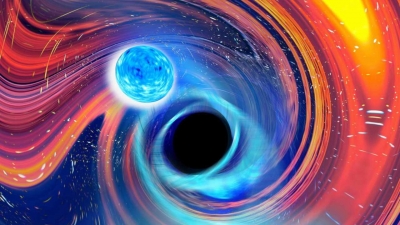
German-born theoretical physicist Albert Einstein is someone who needs no introduction. Best known for developing the theory of relativity, Einstein has made several other important contributions as well.
Einstein had predicted the existence of gravitational waves – ripples in space-time caused by some of the most energetic processes in the universe – in 1916 in his general theory of relativity. It was nearly a 100 years later that gravitational waves were detected from the collision of two black holes for the first time in 2015. The first detection of a neutron star-neutron star collision took place in 2017. And now, finally, black hole-neutron star collisions have been observed.
Observed in January 2020
While the paper announcing the discovery of collisions between black holes and neutron stars beyond doubt was published in June 2021, the two collisions that were observed actually took place separately in January 2020.
The first one observed, on January 5, involved a black hole nine times massive when compared with our sun and a neutron star that is almost twice as massive as our sun. The second one on January 15 involved a black hole 5.7 times as massive as our sun and a neutron star that was 1.5 times massive when compared to our sun.
Types of merger
Before these observations, scientists weren’t sure if the supermassive black holes will simply swallow the lighter neutron stars in a single bite or if the forces of the black hole would shred the neutron star before taking it in. The latter case would be accompanied by glowing debris, which can be picked up by powerful telescopes at our disposal even though they are taking place at astronomically vast distances.
Physicists were able to confirm that no glows or electromagnetic signals were detected in either of these collisions, meaning that the black holes swallowed the neutron stars in a single bite in these two instances at least. Scientists, however, haven’t ruled out the possibility of future collisions producing glows or electromagnetic signals owing to the many factors that are at play.
The discovery of these collisions opens up a universe of possibilities for the scientists. Apart from getting us on the right path towards understanding how these binaries (two star systems) are formed, they could also tell us what proportion of the universe’s heavier elements (gold, platinum, and others) are produced by such collisions.
Picture Credit : Google




